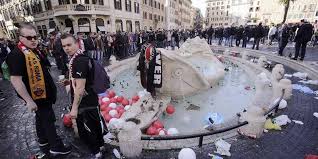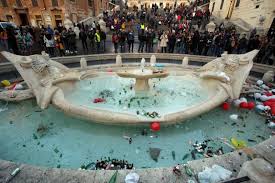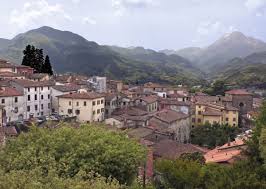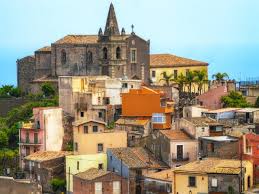Italy: Rome court convicts Feyenoord fans of damaging Bernini fountain

Rome: Six fans of the Dutch football team Feyenoord have been convicted of damaging Rome’s Barcaccia fountain before a Europa League match against AS Roma on 19 February 2015.
The six fans were found guilty in absentia of vandalising the 17th-century fountain at the foot of the Spanish Steps, receiving sentences ranging from three years and eight months to four years, according to Italian news agency ANSA.

The six were also found guilty of “bodily harm, seditious assembly and resisting arrest” by a court in Rome on 7 January, ANSA reports.
The damage to the fountain, estimated at €5.2 million, occurred during clashes in Piazza di Spagna after the Dutch fans spent the day drinking, in defiance of an alcohol ban in the Italian capital.
Rioters threw smoke bombs and smashed glass bottles against the Barcaccia, damaging the central part of the baroque monument which had recently undergone a year-long restoration.
Chipped fragments of the fountain were visible in the waters along with bobbing glass bottles and trash dumped by the hooligans.
The football fans went on to cause mayhem in the city centre, vandalising property and vehicles, intimidating shopkeepers, urinating against apartment doors and jumping on cars, causing an estimated €158,000 worth of damage.
Two days later the Dutch prime minister Mark Rutte telephoned then Italian premier Matteo Renzi to express his apologies for the behaviour of the football fans.
In Rome, Dutch companies and private citizens worked to raise funds to help the city to restore the damaged fountain.
The Barcaccia was commissioned by the Barberini pope Urban VIII (1623-1644), allegedly inspired by a boat brought there by a flood of the Tiber.
The travertine fountain was built in 1626-29 and is accredited to Pietro Bernini, father of the more famous Gian Lorenzo who possibly contributed to the monument’s decoration along with stonemason Battista Bancozzi.
The fountain was restored in the 18th century, the early 19th century and twice in the late 20th century.





